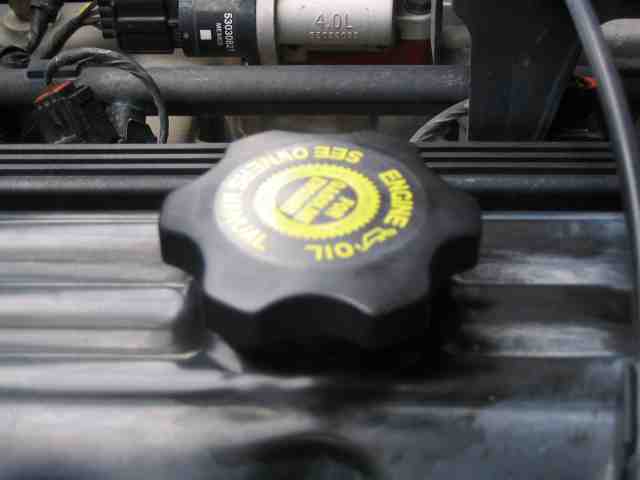For some folks, this write-up may be extremely basic, but some of you have dropped me an e-mail and asked for some basic maintenance write-ups, such as changing the engine oil. I don’t know about the rest of you, but I learned how to do this years ago as a kid, growing up on a farm. While I take it for granted, others haven’t had the opportunity to learn how to do it and this is certainly a task that anyone can do in their driveway and save a few dollars at the same time. MOST importantly, you will know it was done correctly….I simply don’t trust the folks at the local quicky lube down on the corner. Read about too many issues that folks have had when using them. Likewise, I’ve seen the “oil boy” at a local 5 star Jeep dealership mess things up too. So thank you very much, I’ll do my own oil changes (and the rest of the maintenance too for that matter).
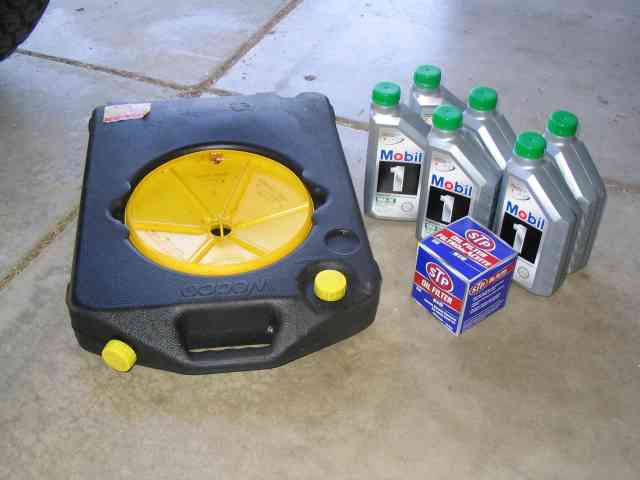
Before you start changing the oil, you will need a few things. If you have a 4.0L engine, pick up 6 quarts of oil. It is recommended that you consult your owner’s manual for the recommended weight of oil. I prefer synthetic oil and use Mobil 1. It costs several dollars a quart more than conventional oil and some folks argue that it is not worth it. I drive about 10K miles per year, which means I do about 3 oils changes per year (every 3K miles). The extra expense for the synthetic oil does not make that much of a difference to me with only 3 oil changes per year. Regardless of the type of oil you choose, be sure to get the proper amount (my engine takes 6 quarts when I change the oil filter) and pick up a new oil filter as well. The folks at your local auto parts store will be able to assist you in doing this if you are not at all certain about getting the correct oil and filter.
You will also need to capture your old oil in some type of container. I use one that I got from the auto parts store and it ran me about $10. I recycle my used oil at the same store I get my new oil and filter at. Please dispose of your used oil properly. Please do not dump it in the ditch or down the storm drain. You will probably need an oil filter wrench (more on that later) which can be had for a couple of dollars as well, from the auto parts store. Luckily the oil filter wrench and catch container will be used over and over again so it is a one time expense.
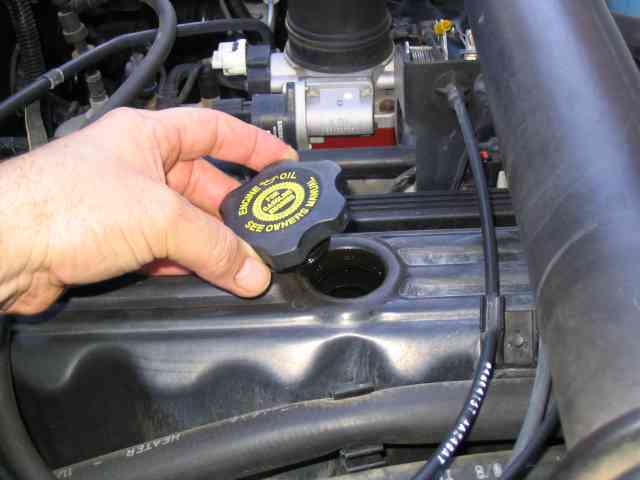
I prefer to change the oil after taking the vehicle for a drive around the block once (or twice if it is cold outside). My point is that I like to warm the oil up and bit and get the oil flowing well before draining it from the oil pan. One thing to consider is that the material used in the TJ’s oil cap (as seen above) is made from something that seems to swell when it gets hot. Removing it when the engine is hot can be a challenge and some folks have actually broken the cap. (Here is some additional info on what to do if the cap is stuck and you can’t wait for the engine block to cool down.) Hence, I do NOT change my oil when the engine has been driven for a period of time and the engine compartment is up to typical operating temperature. I’ll wait until it cools down and the cap can be easily removed.
Which brings us to the first step…..remove the oil fill cap from the valve cover, located on top of your engine (as seen above). Take a clean rag or paper towel and carefully clean any dirt or residue from around the filler hole. Be careful you do not brush the “junk” into the hole. Likewise, wipe the threads of the filler cap clean and then set it aside. Make sure you will be able to add your new oil before you drain the old oil.
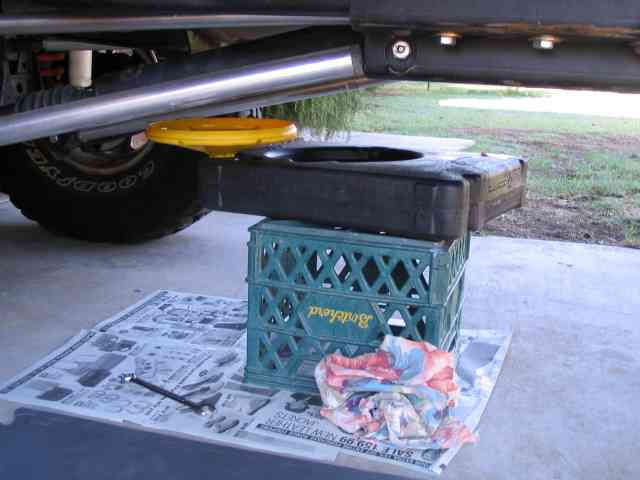
Depending on how high your Jeep is lifted, you may have to get creative when it comes to positioning the used oil container under the oil pan. I find that a milk crate does just fine to move the the container up to a suitable location. I’ve found that I usually end up with oil all over the driveway if I leave the catch container on the ground (your luck may vary). When I do my wife’s car, the container sits on the ground as her car is ever so much lower than my Jeep. Put some newspapers down to catch the splatter (or near miss)
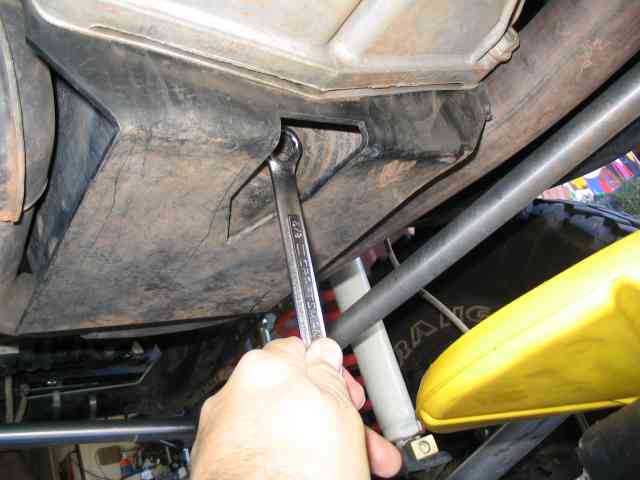
At the rear of the oil pan, you will find a hex head oil pan plug just waiting there for you to slip a 5/8″ wrench onto so you can remove it. Note that in the above picture, I have an oil pan guard protecting the pan itself. The manufacturer of the oil pan guard made an access hole in the guard so I could still get the wrench on the drain plug. Loosen the oil pan plug a turn or two but do not remove it just yet. Now slide the catch container under the oil pan drain hole.
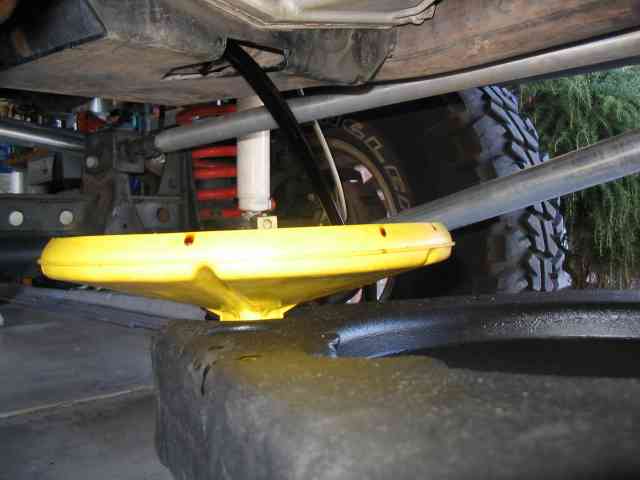
The oil will kind of flow out in an arc so make sure you are ready to slide the catch container around a bit as you remove the drain plug. When you remove that plug, it comes out with pretty good force.

While the oil is draining into the catch container, inspect the oil drain plug. Wipe the threads clean. Now is a good time to make sure the threads are in good shape and have not been cross threaded (yet another neat trick the oil boys at the quickly lube have learned to do).
Engine Oil Change

Earlier, I mentioned an oil filter wrench. The filter wrench is a self-adjusting wrench that is used to remove the oil filter from the side of the engine. It is often times impossible to get the filter off with bare hands, so the wrench is used to make things much easier. I’ve had the one in the above picture for right at 30 years. They don’t wear out very fast.
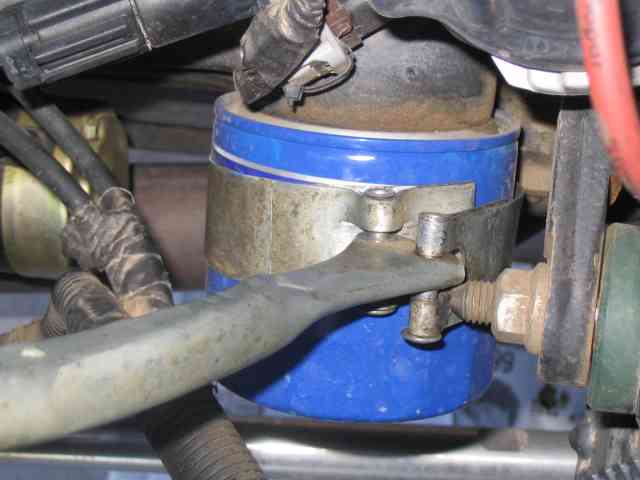
Here is a pic of the oil filter wrench on the oil filter. The filter is located on the passenger side of the engine. The filter wrench is designed in such a way that it grabs the filter body as you apply pressure to unscrew the filter. Once the filter is loosened, you can remove the filter wrench and spin the filter off the rest of the way. The filter has a rubber gasket that seals it against the filter mounting surface. Make sure this gasket is still on the filter and not stuck on the mounting surface when you remove the filter. If it gets left behind and you put the new filter on without cleaning the mounting surface, you will most likely have a bad oil leak and you’ll be cleaning up a big mess.
As you remove the oil filter, you will discover that it is filled with oil. It will leak out as you are removing it. Again, it is a good idea to have some newspapers on the ground under the filter. I guarantee you that some will certainly drain out of the filter and onto the ground.
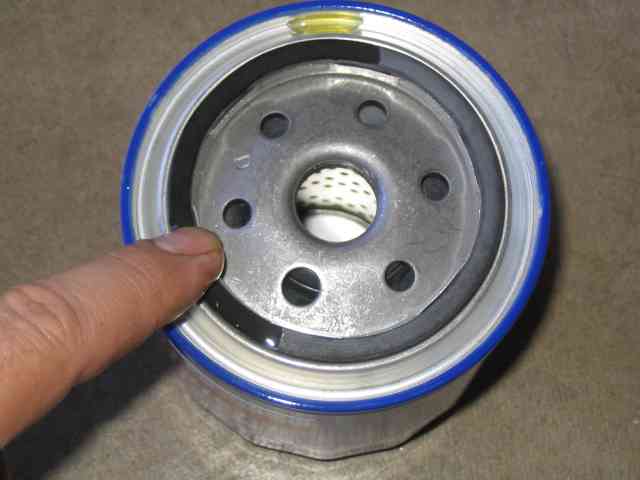
Speaking of the gasket on the filter, take some oil on your finger tip and spread it onto the gasket surface. This will allow the gasket to seat smoothly. When you thread the new filter into position, following the manufacturers installations instructions. They should tell you how to properly tighten the filter into position.
By this time, the oil pan should have finished draining into the catch container. Replace the oil drain plug and tighten it with a wrench. Don’t go crazy on it. The drain plug only has to stop the oil from leaking out. It is not there to hold anything else in position so you don’t have to tighten it a lot.

With the drain plug and new oil filter properly installed, it is time to put the new oil into the engine. I keep a funnel around for such things. I let each bottle of oil drain for about 30 seconds once I am done pouring it into the funnel.
After you have put all of the oil into the engine, replace the oil filler cap. Do a final check, one more time, of the area where you have been working. There is no reason to have an oil filter wrench fall into the radiator fan or have some rags get wrapped around the alternator pulley just because you didn’t take a few seconds and make sure everything was in proper order.
Start the engine and let it idle for about 15 seconds. You should see your oil pressure indication go up to its normal position on the instrument cluster. After 15 seconds, turn off the engine. Now check underneath and make sure you have no oil leaks. Look carefully around the oil filter to make sure it is not leaking around the filter gasket. Likewise, the drain plug should be oil free and show no signs of leaking. Wait a couple of minutes and check the oil level on the dip stick. If you are doing a 4.0L engine and have added 6 quarts and a filter, the oil level on the dipstick should be at or very near the FULL mark.
If all looks good, you are finished!
Congratulations, you just did an oil and filter change and you know it is done correctly!
Engine Oil Cap
It’s a well known problem that once the TJ’s engine oil fill cap is hot, unscrewing it from the valve cover is difficult at the very least. I recently broke my own rule about changing the oil when the engine was hot….but I basically had no choice. I snapped a couple of pics of the filler cap when it decided not to come off in the usual manner.
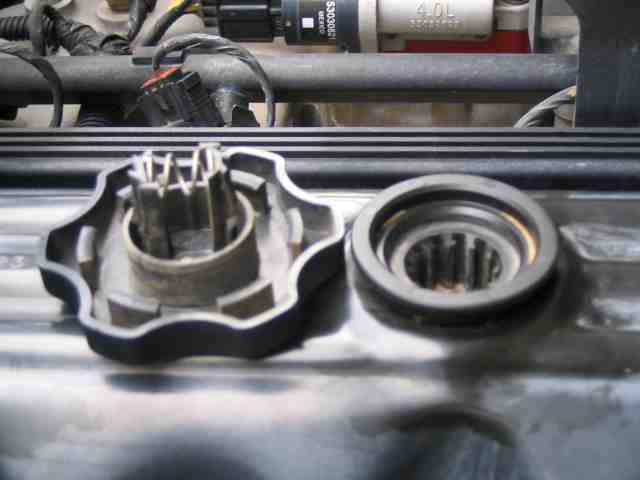
The first thing that happens is that while you attempt to unscrew it, it starts to click and ratchet and will not release itself from the valve cover. When this occurs, pry the top of the cap off. I used a screw driver to get a little leverage. It will separate into two pieces. Pry it off and set it aside.
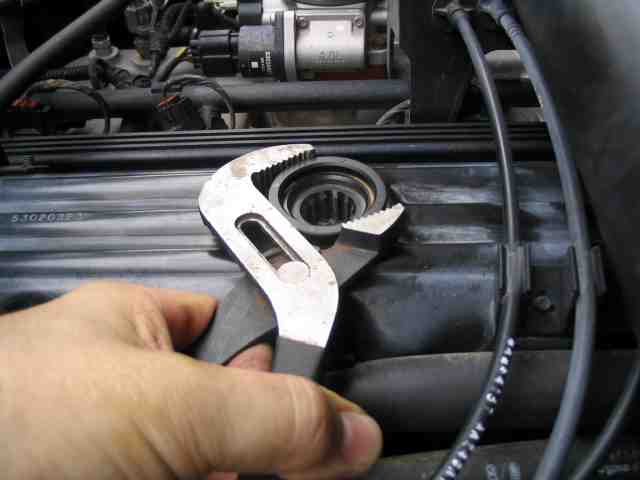
With the “top half” of the cover removed, you can now grab a pair of pliers and carefully unscrew the “lower half” of the filler cap from the valve cover.
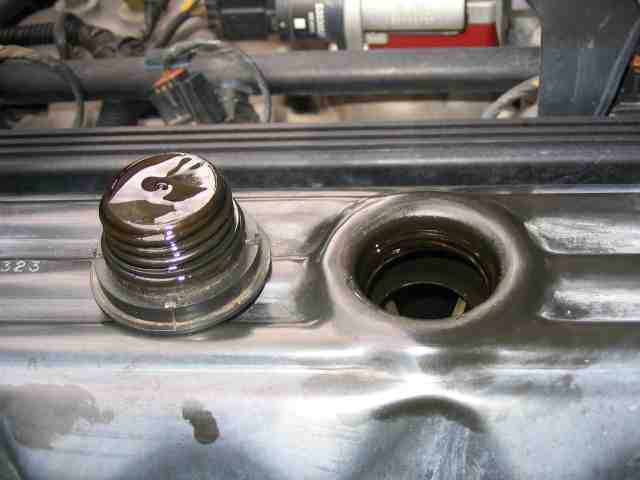
Success! With this half removed, you can snap the two pieces back together. Note, you will notice that the teeth in the upper half are probably a bit rounded off and it may not work quite as well as it once did. If this becomes a problem, pick up a new one at the auto parts store or the dealership.

